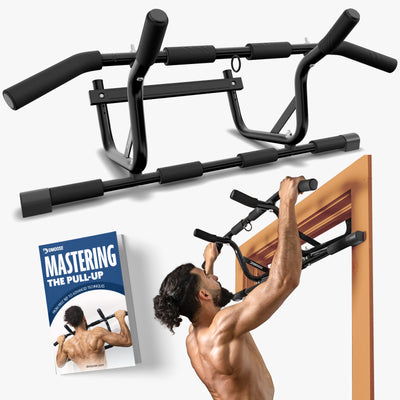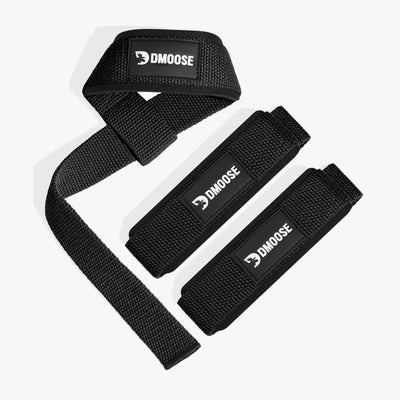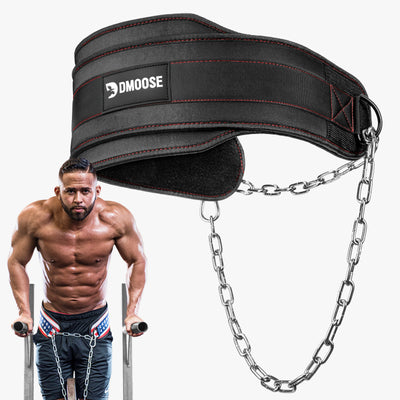Installing a doorway pull-up bar is one of the easiest ways to build a home gym without taking up floor space.
But many people hesitate, assuming setup is complicated or time-consuming. In reality, most modern pull-up bars are designed for quick, tool-free Pull Up Bar Doorway installation.
The key is knowing which type of bar you have and how to position it correctly in your doorway.
This guide walks you through the entire process, so you can start your workouts with confidence and safety in minutes.
How to Set Up a Doorway Pull-Up Bar: Step-by-Step Setup Instructions
Installing a doorway pull-up bar is simple once you know what type you're working with. Each style has its own installation method, and following the correct steps ensures safety and performance. Below are instructions for the three most common types of bars.

1. For Hook-Style Bars
Hook-style bars, like the DMoose Doorway Pull Up Bar, use leverage to hold the unit in place against your door frame without screws or permanent fixtures. These bars are among the easiest to install and remove.
Step 1: Align with the Top of the Door Frame
Hold the bar so the upper crossbar hooks over the top trim of your doorway. Ensure the padded horizontal bar is flush against the opposite side of the wall for proper leverage.
Step 2: Engage the Leverage Arms
Carefully lower the bar so that the leverage arms rest securely against the sides of the doorway. The weight of your body during exercise will push the bar downward and inward, increasing its grip.
Step 3: Check Stability with a Gentle Pull
Before performing any exercises, pull down gently on the bar to confirm it's stable and seated correctly. If it shifts or creaks, reposition and try again. The DMoose bar includes rubberized contact points to protect your door trim and reduce slippage.
The DMoose Doorway Pull-Up Bar fits standard doorways 24"–36" wide and requires no drilling or tools. Its heavy-duty steel construction and cushioned grips offer reliable support up to 300 lbs, making it ideal for both beginners and advanced users.

2. For Telescopic Pull-Up Bars
Telescopic bars, often called twist-lock or extendable bars, rely on outward pressure to stay in place between two sides of the door frame. They are compact and often leave no marks, but proper tension is critical for safety.
Step 1: Twist and Extend to Fit the Width
Rotate the bar to expand it until it firmly contacts both sides of the doorway. Most telescopic bars have rubber ends to protect the wall surface and improve grip.
Step 2: Secure Firmly Against Door Sides
Once adjusted to the right width, lock the mechanism per the manufacturer’s instructions—this may be a separate locking nut or internal locking system. Make sure it feels tight and evenly aligned.
Step 3: Test for Slipping or Rotation
Give the bar a cautious downward tug and apply slight pressure side-to-side to ensure it won’t twist or collapse under weight. This type is best used for static movements like chin-ups or leg raises, not dynamic or swinging exercises.
3. For Tension-Mounted Pull-Up Bars
Tension-mounted bars use spring-loaded pressure or adjustable mounts to stay fixed at your desired height in the doorway. These are commonly used for stretching, assisted pull-ups, or resistance band training.
Step 1: Position at Desired Height
Place the bar at the appropriate level depending on your use—high for pull-ups or low for stretches and mobility work. Ensure the bar is centered to distribute force evenly.
Step 2: Lock Into Place Per Manufacturer Instructions
Depending on the model, tighten the side brackets, apply pressure via the tension mechanism, or use the included tools to secure it. Always follow brand-specific guidance for safe installation.
Step 3: Confirm Tightness and Pressure
Apply moderate body weight or a test hang to see if the bar holds. There should be zero movement or loosening. If unsure, retighten or lower the tension to avoid damage to the door frame.
Safety Checks Before Use

Before you begin your first set, it's essential to make sure your doorway pull-up bar is securely installed and safe to use. Here are key safety checks to perform:
Inspect the Bar’s Grip and Frame
Check for any visible cracks, dents, or defects in the metal frame. Ensure that the foam grips are securely attached and not worn out or slipping. Any damage can compromise stability and lead to injury.
Confirm Door Frame Stability
Not all door frames are created equal. Examine your frame for cracks, loose trim, or signs of wear. A strong, well-fitted frame is essential to support your body weight without risk of collapse.
Ensure Proper Bar Placement
Double-check that the bar is aligned and seated according to the manufacturer’s instructions. For hook-style bars, the leverage points should be tight against the wall. For telescopic bars, both ends should be pressing evenly against the doorway.
Perform a Controlled Test Hang
Grip the bar and slowly shift your weight onto it with your feet still lightly touching the floor. This lets you test the bar’s ability to support weight without committing to a full hang or pull-up right away.
Test for Movement or Creaking
Any shifting, creaking, or wobbling during the test hang may indicate improper installation. Reposition or re-tighten the bar until you achieve complete stability.
Verify Weight Limit Compatibility
Make sure your body weight (including any weighted gear) is within the bar’s stated weight capacity. Most quality bars like the DMoose Doorway Pull-Up Bar are rated for up to 300 lbs, but it’s best to confirm your specific model’s limit.
Check for Obstructions Around the Bar
Ensure there is enough head clearance above and space around the bar for safe motion. This prevents accidental collisions with the ceiling, doorframe, or nearby furniture during your workout.
Tips for Long-Term Use and Maintenance

- Wipe Down Grips: Clean the foam or rubber handles regularly to maintain hygiene and ensure a firm grip during workouts.
- Avoid Dynamic Movements: Refrain from swinging, kipping, or jerky motions to prevent unnecessary strain on both the bar and your doorframe.
- Remove When Idle: If you’re not using the bar daily, take it down to relieve long-term pressure on the doorway structure.
- Check Weekly for Damage: Inspect the bar once a week for loose joints, cracked components, or worn grips that could compromise safety.
- Avoid Overloading: Always stay within the bar’s listed weight limit, including any added resistance or weighted accessories.
- Secure Before Every Use: Before each session, give the bar a firm pull to confirm it’s properly locked in place and safe to use.
- Store in a Safe Spot: Keep the bar in a dry, cool place when not in use to avoid rust, warping, or material degradation.
Conclusion
Setting up a doorway pull-up bar doesn’t have to be complicated or time-consuming. With the right preparation, proper installation steps, and a few safety checks, you can have your bar ready for use in just minutes.
By following the tips in this guide, you’ll not only ensure a secure setup but also extend the life of your equipment and protect your home. Now you’re ready to pull up with confidence.











